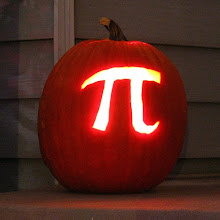PORTLAND, Ore. — Researchers have been able to stop and start chemical reactions between molecules at temperatures colder than the depths of outer space. And new theoretical descriptions help explain the quantum mechanical details of these ultracold chemical reactions.
The details, presented March 17 at a meeting of the American Physical Society, offer glimpses into the burgeoning field of ultracold physics, which enables the creation of strange new states of matter and has potential applications in quantum computers and precision measurement devices (SN: 12/20/08, p. 22). At temperatures this low, the molecules no longer obey everyday rules, but instead are governed by quantum mechanics.
Deborah Jin and Jun Ye, both of the University of Colorado at Boulder and the JILA research center in Boulder, led experiments which used precisely tuned lasers and electric fields to deftly start and stop reactions between ultracold potassium-rubidium molecules.
“It’s a beautiful demonstration of how quantum mechanics works,” said Jeremy Hutson, a chemist at the University of Durham in England who studies ultracold reactions. The new studies reveal the existence of strange quantum effects “in a very simple regime that’s never been explored before.”
The University of Colorado researchers used lasers to cool the potassium-rubidium molecules, halting all the frenetic motion that usually characterizes the jittery molecules. Held in this chilly “ground state” at around 200 nanokelvin, the molecules moved incredibly slowly, Ye said. But after a second or so, the molecules started to disappear by twos.
“What’s going on here is chemistry,” Jin says. The potassium-rubidium molecules interact with each other to form molecules made up of two potassium atoms and two rubidium atoms. These results also appeared February 12 in Science.
At the meeting, Jin and Ye presented new preliminary results showing that not only do these chemical reactions occur, but that they can be sped up and halted. Potassium-rubidium molecules have slight electric charges at each end — slightly negative at the potassium atom and slightly positive at the rubidium atom. These dipole moments can act like small handles, giving researchers a way to manipulate the molecules. When the team turned up an electric field around the ultracold molecules, the chemical reaction rate went up dramatically by a factor of 20 or 30, Jin said. The positive rubidium atom on one molecule was hungrier for the negative potassium atom on another molecule.
In a second set of experiments, Jin and Ye showed that the molecules’ chemical reactions also could be suppressed. Since these chemical reactions happen only when the molecules line up head to tail, researchers could lock the molecules into a conformation that prevents the molecules from reacting. The team used a laser to slice a big glob of ultracold molecules into 20 or so very thin, pancakelike shapes. This tight conformation prevented the molecules from lining up head to tail, and the chemical reactions were suppressed, the team found. The ability to stop these chemical reactions — which can be bothersome, depending on the experiment — is important, Jin says. “Chemical reactions are great and fun,” until an experiment requires the original molecules themselves, Jin says. “Then those chemical reactions are kind of a problem.”
The experimental results highlight how scientists can control the reactions of the molecules under different conditions, but new theoretical results reported at the meeting illuminate how the ultracold molecules find each other in the first place. Paul Julienne, a theoretical physicist at the National Institute of Standards and Technology in Gaithersburg, Md., presented a quantum mechanical description of the molecules’ reaction rates. At temperatures this cold, the molecules behave more like diffuse waves rather than discrete spots. Julienne and his collaborator Zbigniew Idziaszek of the University of Warsaw in Poland found that under ultracold conditions, long-range effects of these waves, which can reach hundreds of nanometers, influence how the molecules close in on each other.
Once the molecules are within one nanometer or so of each other, they “react with great certainty,” Julienne said. “The reaction rates turn out to depend entirely on how the long-range forces work.” The theoretically predicted reaction rates, which will appear soon in Physical Review Letters, agree very well with the rates observed by Jin and Ye in their experiments, Julienne said.
Collections of ultracold, polar molecules might lead to new forms of matter, as well as technological applications, the researchers said. An internal property of the molecule called spin could hold quantum information and form the basis of a quantum computer, for instance.
“The beautiful thing is that we’ve got full quantum control over all degrees of freedom of the particles,” Julienne says. “I’m hoping that we can do some really neat things with these molecules.”
This blog contain the most upto date science facets and articles Also it contain the most wired science of them all.
Geek sites
Blog Archive
Pages
Labels
- acids (1)
- alternative energy (1)
- astronomy (2)
- aviation (1)
- biology (2)
- chemistry (3)
- Earth (1)
- Personal (1)
- physics (5)
- technology (5)
2010 - Hyper Science is proudly powered by Blogger
Blogger Template created by Anshul
Design By Templatelite.com
Blogger Template created by Anshul
Design By Templatelite.com

0 comments:
Post a Comment